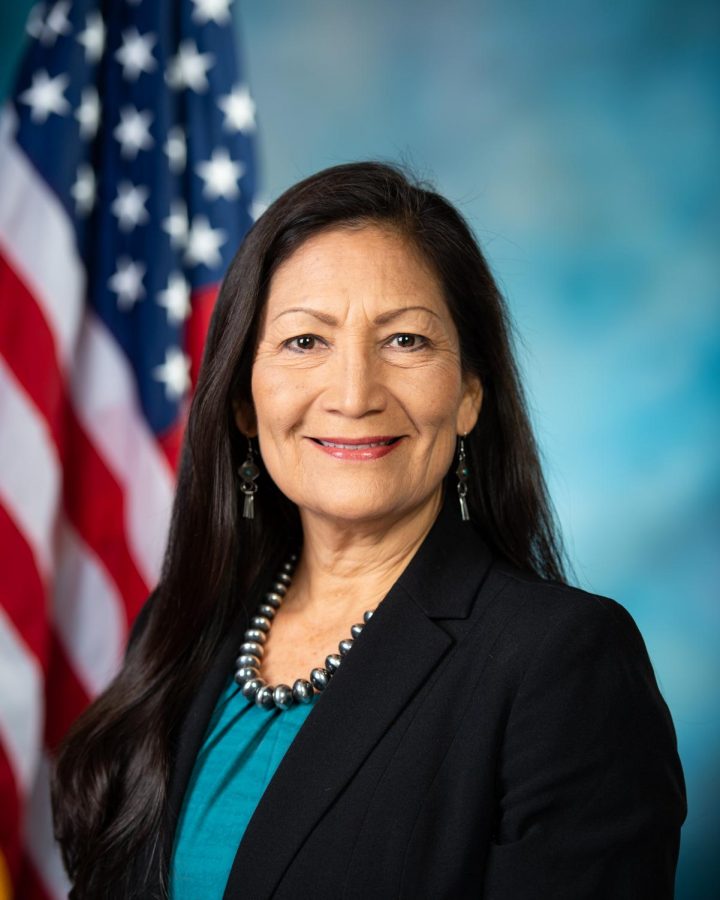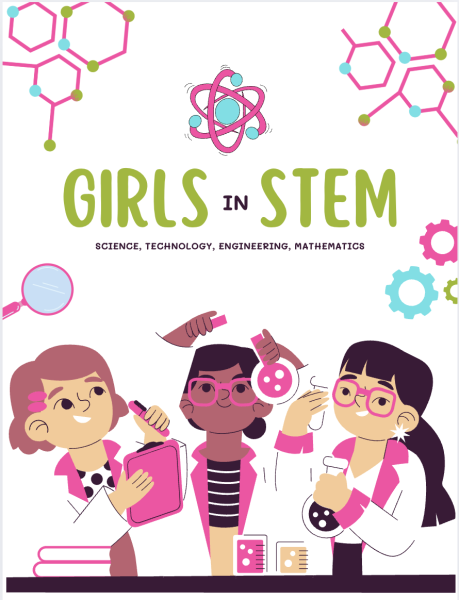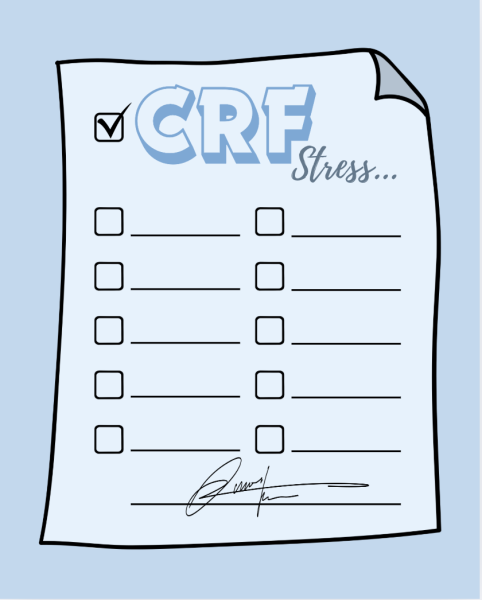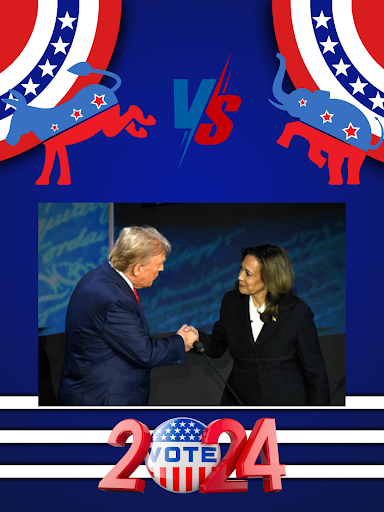A step in the right direction
Congresswoman Deb Haaland stands for her official congressional photo.
On November 6, the American people elected their most diverse Congress yet. The 116th Congress will have more women and people of color than any past session. The 2018 midterm elections were a step forward toward an accurate representation of the American people in their government, but there is still more work to do.
In the 116th Congress, 126 of the 535 members will be women. Of those, 43 are women of color. 2019 will see nine women serving as state governors. The first Native American women, Deb Haaland (D-NM) and Sharice Davids (D-KS), and the first Muslim women, Rashida Tlaib (D-MI) and Ilhan Omar (D-MN), were elected to Congress.
As the nation’s elected officials become more diverse the government starts to look more like the people it serves. Not everyone in the country comes from the same background or has had the same experiences, and these experiences often tie back to issues debated in the government.
“People from different backgrounds are treated differently,” junior Ziad Kamil said. “They have different experiences that are valuable to consider when making decisions concerning the entire country. It’s ignorant to think that a homogenous group can make decisions for a very diverse nation. It’s easy to empathize with less privileged people, but basically impossible to fully understand their experience since they haven’t lived it.”
Democrats had promised a “blue wave” at the start of last year’s election cycle, which was their term for the sweeping victories that had been predicted for them. They intended for the midterms to serve as a demonstration of their discontent with the current administration and a shift in the polarization of America. This so-called “wave” did not happen, at least not in the way that they said that it would on the campaign trail, but they did manage to secure a more diverse Congress.
“People who are angry are more inclined to push for things that they want,” Kamil said. “The left is angry, and they want diversity.”
The election of diverse candidates into the national government is also being attributed by many to the fact that minorities want their issues to be addressed at the national level.
“Even on the liberal side, I still see prioritization of other issues versus helping [people of color], junior Zahira Hernandez said. “We’re tired of being treated like less, [like] second class citizens, and so we’ve decided to take matters into our own hands and voted for people who actually care about what we have to say.”
Many people are hoping that the increased diversity in the national government will lead to new legislation, particularly bills that would focus on issues that impact underrepresented minorities whose problems have been overlooked in the past.
“I think there will be more attention – and I’m hoping – aimed at helping [people of color] when it comes to legal and social discrimination, particularly with the black community,” Hernandez said. “We’ve seen time and time again how black folks are treated as second class citizens, and how these actions are justified by the public, so an emphasis on improving these communities will be something I think will come to light.”
This is not to say that the government is as representative of the American population as it could be. While the U.S. Census Bureau lists 50.8 percent of the American population as female, only 23.5 percent of the 116th Congress, the most diverse yet, will be female. Take immigration, for example. According to the Pew Research Center, 40 million people, with some from almost every country in the world, are living in the United States. The 115th Congress, inaugurated in January 2017, was only 19 percent non-white members, while Pew Research Center identifies the percentage of minority and nonwhite Americans as 38 percent. Many Americans see this disparity as something that needs to be fixed in future elections.
“It’s impossible to be able to accurately represent people if you don’t understand their struggle and hustle,” Hernandez said. “Having people from different minority communities makes it easier to find common ground because there’s similarities like culture and language. It’s important for the people who fight for us to look like us because they understand it more.”
Diversity is not just needed on the House floor or in state governor’s offices. Most of the work in the government, like drafting laws, is done behind the scenes by an elected official’s staff. The diversity of political staffers in America is even lower than that of the representatives they work for. According to CNBC, only 14 percent of the top staff in the House of Representatives are people of color, despite the fact that they are 38 percent of the American population.
“I think it’s important because they also represent who the population [is],” junior Zarah King said. “Having the face of the government be people who are diverse doesn’t mean that actually what’s happening in government is what people in the country think.”
The 116th Congress will be the most diverse in American history, and more than a few “firsts” were made in the recent midterm elections. The increase in representation for groups like women, people of color and members of the LGBTQ+ community has been well-received by many people.
“I think the diversity that resulted from the midterms was very jaw-dropping in a sense since up until recently our government was [run] by mainly white people,” Hernandez said. “After the chaos that the country has dealt with over politics, it’s been a breath of fresh air to see a group of people unite as one in order to achieve a common goal.”













